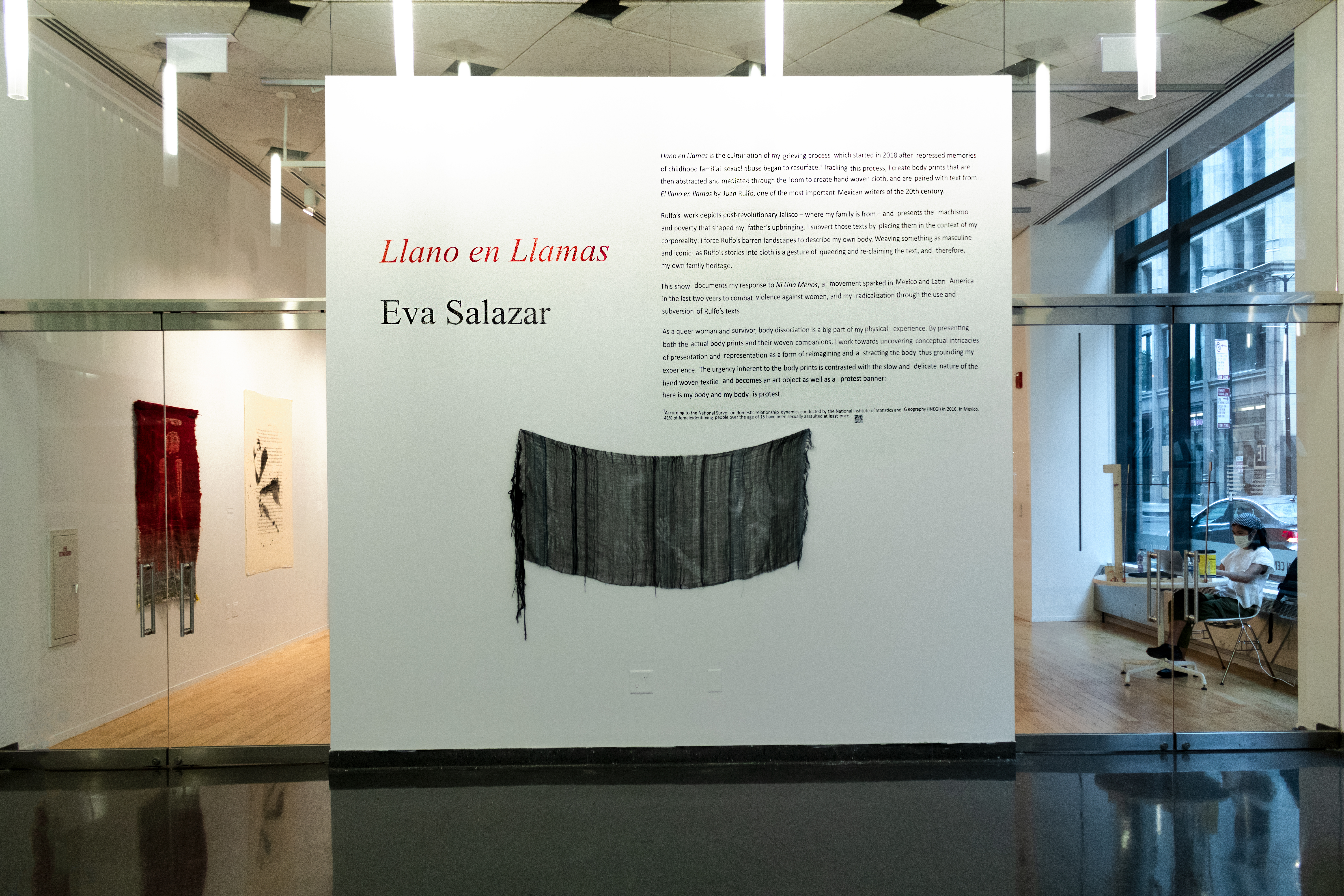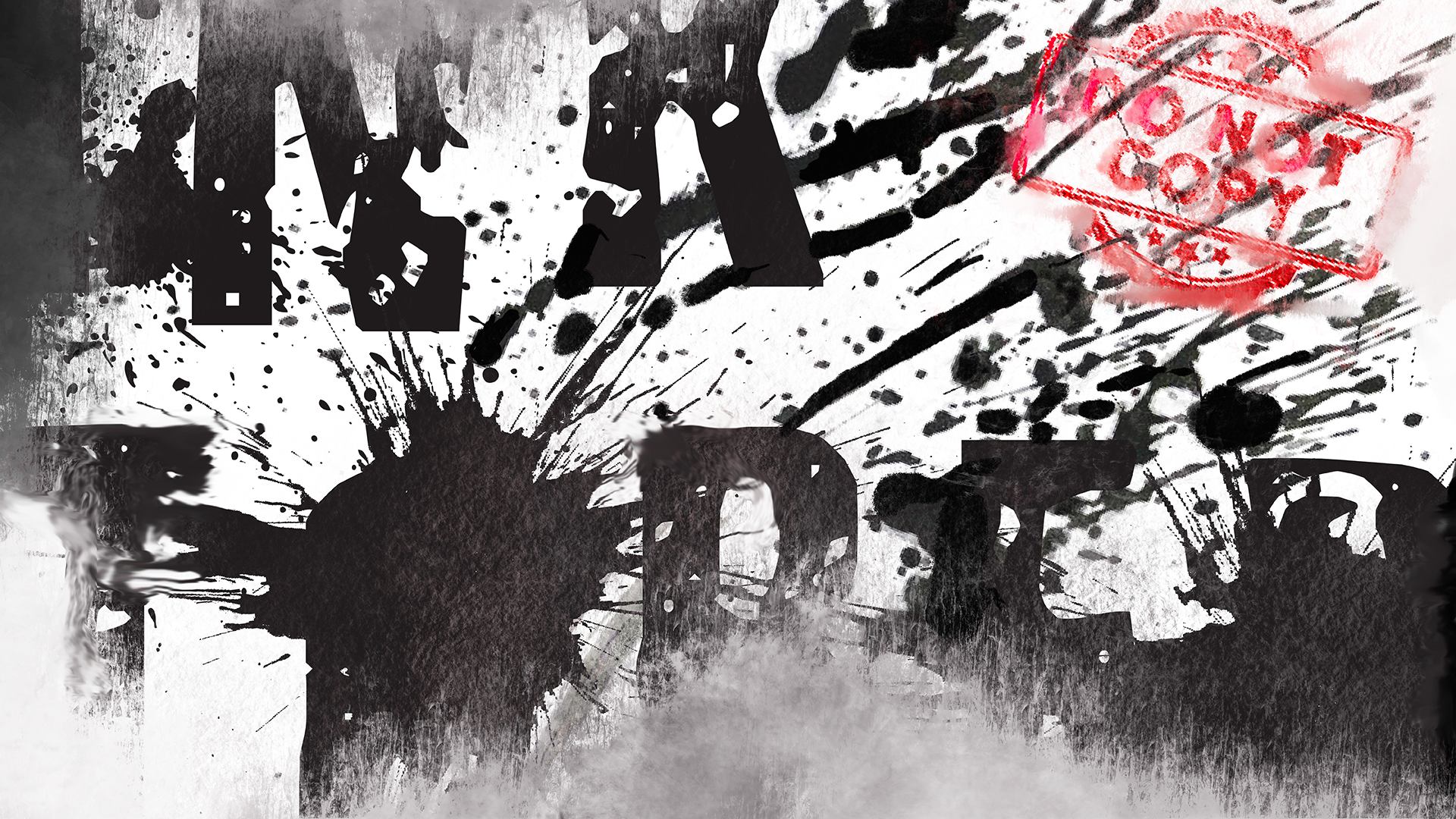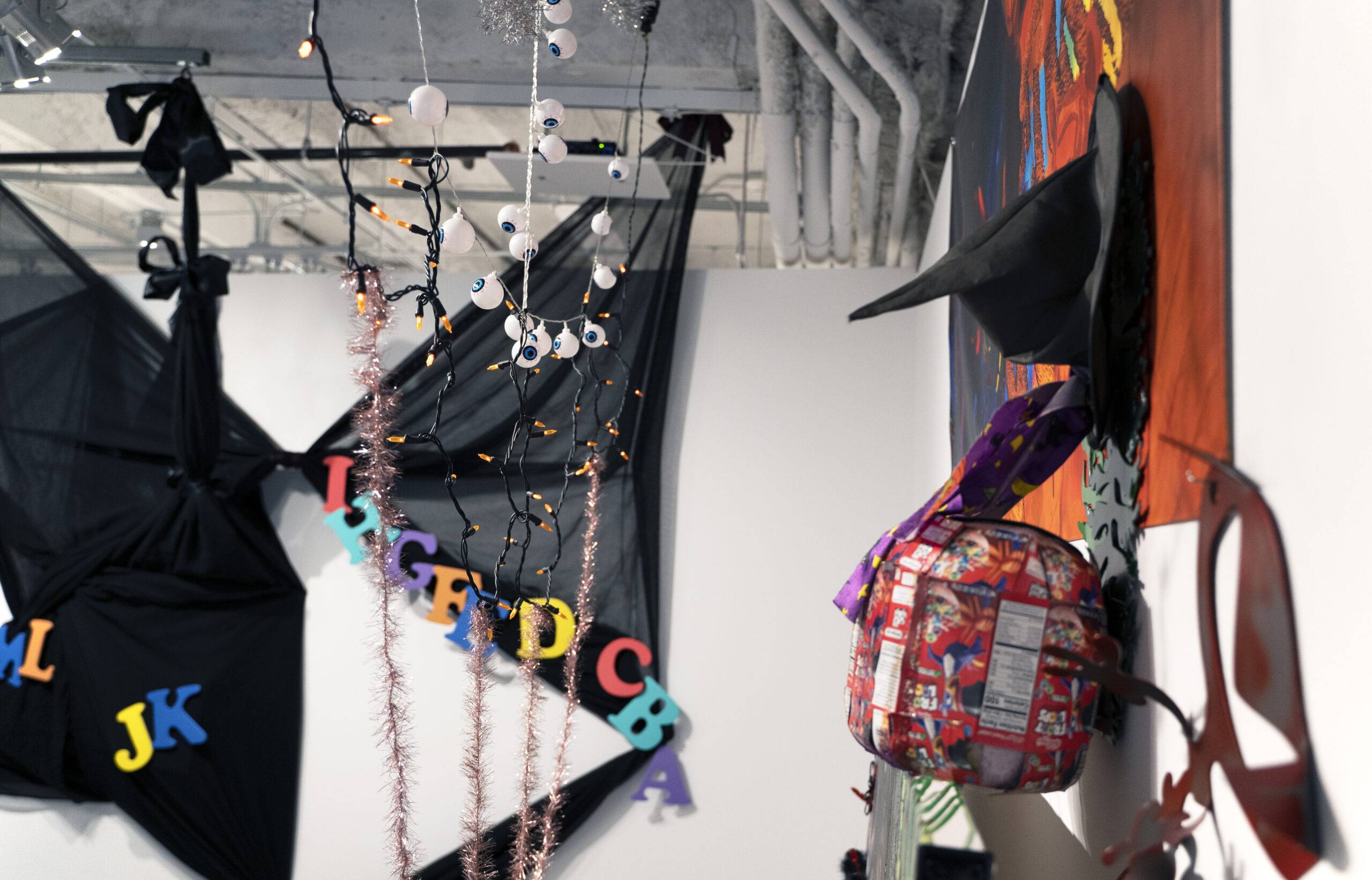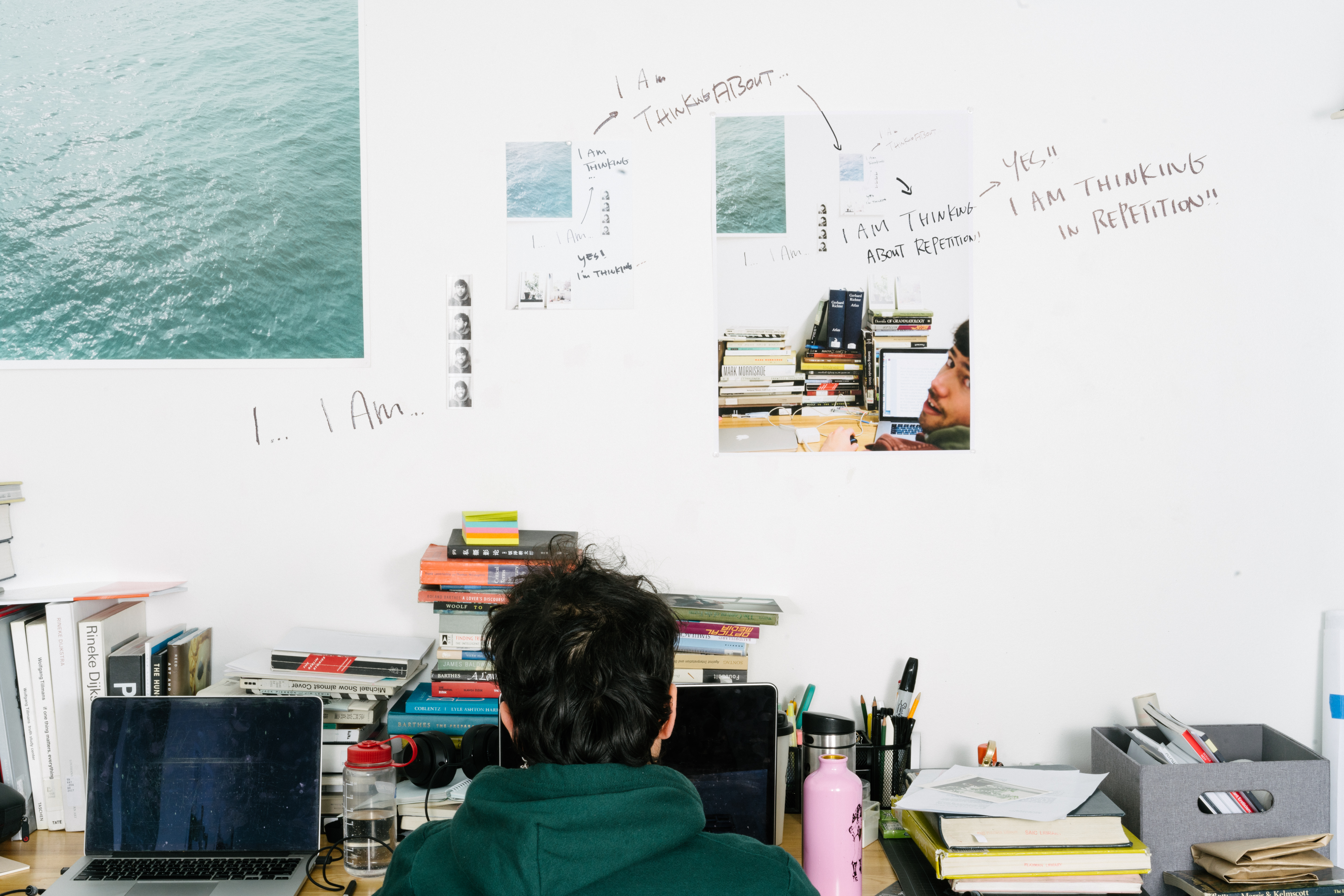
All photos by Veronica Rosas Vargas, courtesy of SITE Galleries. “Llano en llamas” show, gallery view, at SITE galleries, September 2020.
Student artist Eva Salazar’s solo show “Llano en llamas” is about storytelling. It’s about the stories we tell ourselves in order to survive, the stories that are handed down to us by our families, the stories that become part of the fabric of our own being. It’s also about the power of self-authorship, and the hard work that it takes to re-write the stories we inherit.
In “Llano en llamas,” currently on view at SITE galleries, Salazar (BFA 2021) documents her grieving process in the wake of remembering repressed familial childhood sexual abuse. Eva’s work and curation deftly guides the viewer through this difficult subject matter.
The show presents a series of woven tapestries and screen printed images or text on fabric and canvas. Each piece is punctuated with impressions of the artist’s body in ink or woven into the work itself. The artist’s use of her own body in every artwork creates a sense of unity that pulls the show together.
The works in the show are also united by language. Each is paired with text from the book “El llano en llamas” (“The Plain in Flames”) by Mexican author Juan Rulfo. I was curious to learn more from Eva about her process for selecting snippets of Rulfo’s text to accompany her work.
“When I first encountered “El llano en llamas” my junior year in high school, I was immediately drawn to the way the characters speak, which is a take on the way people express themselves in the state of Jalisco, where my family is from,” Eva told me in an email interview. “I take quotes that describe this barren land, or [the] desert that the characters are forced to get through. I feel that this landscape, this plain in flames, is my body — but [it is] also the trauma itself, and that I am made to push through in my journey, with the hope that I will get through it and reach something on the other side.”
By employing the words of one of Mexico’s most famous storytellers, Eva places her personal and familial history within the larger context of Mexican history.
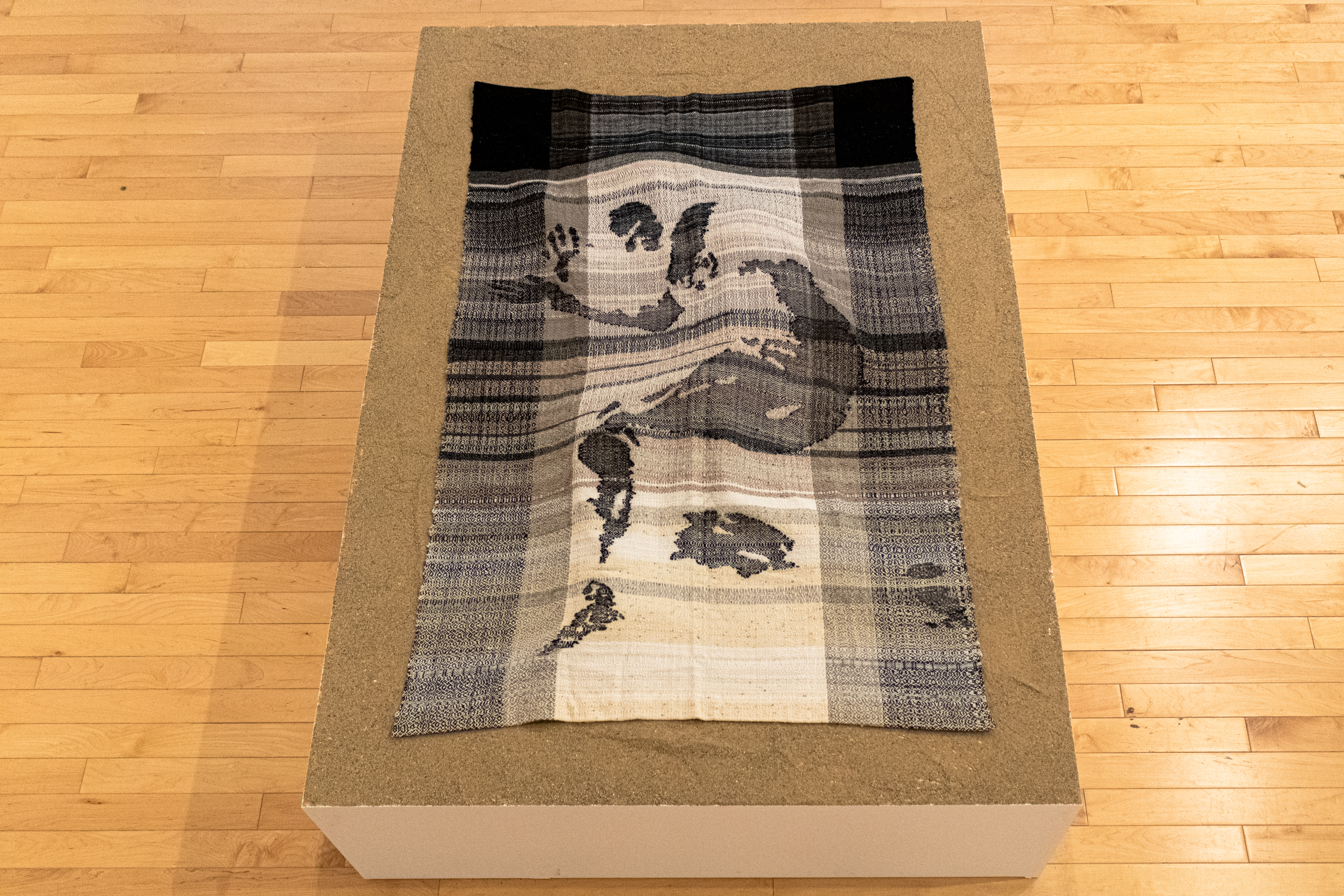
No tenia ganas de nada, solo de vivir, Eva Salazar, 2019. Cotton and hand dyed wool woven brocade cloth woven on a floor loom, artist body. Photo by Veronica Rosas Vargas.
As I wandered around the gallery, I also wondered about the other artistic, literary, and cultural influences that Salazar drew from to create her work. The bodily impressions made in ink, or woven into the textiles are evocative of Cuban American artist Ana Mendieta’s “Siluetas” series. Eva’s bodies give the impression of being pressed into the fabric, akin to the way Mendieta documented her body pressed into the earth.
In “Este blanco,” the body of the artist is curled into a fetal position. In other works, the front of the artist’s torso appears pressed into the canvas, arms reaching overhead, hips twisted, legs splayed apart. While the positions of the bodies may seem vulnerable or submissive, the transferring of these impressions onto the canvas or woven into the fabric charges them with a sense of agency, even aggression.
“Azulejos” (Tiles), a piece made of stretched canvas and screen printed with a pattern of blue tiles leans against the wall, the curled side of the artist’s body is pressed into the fabric in soft red ink. The impression left on the canvas is suggestive of blood being scrubbed from a white floor. The surface appears stained, and the piece seems to ask what happens when memories cannot be fully erased.
In “Quizá entonces se volvió malo, o quizá ya era de nacimiento” (“Maybe he turned bad then, or maybe he was that way from birth”), a piece made of thickly woven black cotton draws the viewer in for a closer look. Because of the dark, monochromatic color, close viewing is required in order to see the details of the weaving. Looking carefully at the woven black cotton, I could see stray pieces of hair stuck to the yarn. While likely unintentional, the hairs made me think about the bodily experience of making art. It made me consider that using your own body to create might be empowering and healing. But this is the type of empathetic thinking that is present in all of Eva’s work, and is evidenced by her craftsmanship.
As I moved throughout the gallery space, I found myself zig-zagging my way from artwork to artwork, looping back to re-read titles, or to look at specific details I may have missed. The colors that populate the room are black and red, and the not-quite-white of the pages of a book.
I left the gallery with the feeling that I had been given a gift. Eva Salazar’s work is generous and honest. We all have aspects of our childhood that deserve a second look, and Eva shares her story of childhood traumas and myths with unflinching vulnerability. Eva’s work shows us that it is possible to re-write the stories that define us, and asks us to imagine the stories we might write.
Llano en llamas is on view at SITE Galleries through Sept. 22.

